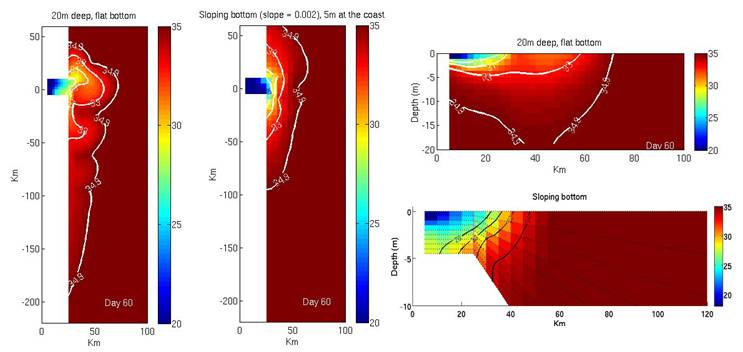DESCRIPTION:
Left: Surface salinity snapshots of the plume development in two different basis, 20m deep flat bottom and sloping bottom (starting at 5m at the coast), after 60 days. In the 20m deep basin, the buoyant plume is free to develop, with no bottom constrains. An offshore bulge develops off the estuary, with an anticycloniccirculation (not shown). This flow meets the coast south of the estuary, turns cyclonically and propagates southward as a coastal current, with a meandering pattern that is visible in the surface salinity field. When the plume develops over the sloping bottom, its development is restricted by potential vorticityconstrains. The plume develops a stronger northward penetration, with a less developed bulge and coastal current signal.
Right: Vertical salinity cross-shore sections (y = 0km) from the same experiments. In the 20m deep flat bottom basin, a two layer structure develops, with a shallow buoyant plume on top of the basin denser waters. In the sloping bottom basin, the plume extends down to the bottom, with enhanced vertical mixing due to bottom friction.




